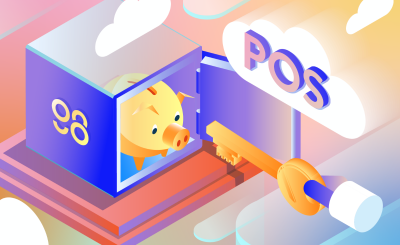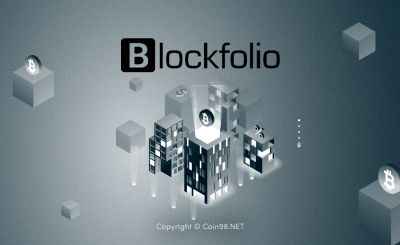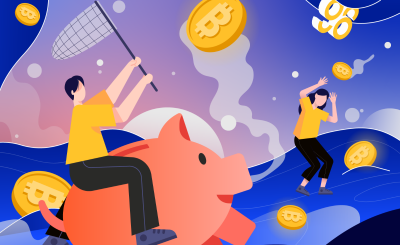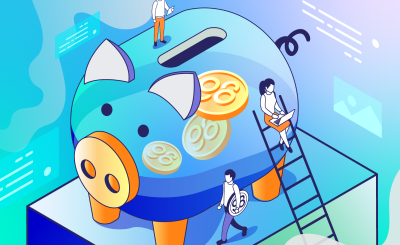In today’s article, I will introduce you to the definition of what Lending is and what we need to know when investing in Lending Coin that we often see recently. This form is developing rapidly and diversified from lending on separate platforms (NEXO, Cred, Constant, BlockFi…) to lending right on exchanges (Binance Lending, Gate Lending, Poloniex…).
What is Lending?
Lending means lending, this is a form of users using their assets or money to lend to others (Borrowers) at a certain interest rate. After a period of time, they will get back the principal and interest as originally agreed. Borrowers here can be other users, or exchanges.
Eg: Brothers lend 100 BUSD on Binance Lending at 10% a year for 14 days. Then after 14 days, the total amount of coins you have received is: 100 BUSD + interest.
⇒ Profit = 100 x 10% x 14/365 = 0.5283 BUSD.
⇒ Total revenue = 100 + 0.5283 = 100.5283 BUSD.

Example Lending 100 BUSD on Binance Lending.
Features of Lending
Advantage
- Users can choose to lend their idle coins to increase the number of coins.
- Often platforms will have many options for lending time to diversify options for lenders.
Defect
- The biggest risk to lending is that the price of that coin is reduced during the lending process & the interest does not make up for the shortfall caused by the price of the coin.
Eg: On Binance Lending, open ETC coin lending. Interest rate is 7% a year, for 14 days.
- September 11, 2019 (starting lending): ETC price is $6.6 USD.
- September 25, 2019 (principal + interest payment): ETC price is $4.6 USD.
If you lend 100 ETC, the total received will be 100 + 100 x 7% x 14/365 = 100,268 ETC = $661,772 USD (calculated at the time of lending).
But if calculated according to the ETC price at the time of interest payment, the total income will be 100,268 x 4.6 = 461.2328, down 30.3%.
Forms of Lending in Crypto
Currently, Lending in Crypto is divided into 3 forms:
- P2P Lending: Peer-to-peer lending.
- Over-Collateralized Lending: Loans are too standard.
- Under-Collateralized Lending: Subprime loans.
In which, Over-Collateralized Lending and Under-Collateralized Lending are 2 forms using the mechanism. Lending Poolin there:
- Lenders will transfer the supported coins to the liquidity pool, in return, they will receive interest.
- Borrowers will move other coins into the Liquidity Pool as collateral, then borrow the coins they want from the Liquidity Pool and will pay interest. The interest rate will be calculated automatically according to the available formula and depends on the supply and demand of each asset class in the Lending Pool.

What is Over-Collateralized Lending?
Over-Collateralized Lending is a form of lending with more collateral than borrowed property.
The advantage of Over-Collateralized Lending is that users can Make the most of your capital. A simple example can be found in FTX, you can deposit your coins there, and borrow money from the exchange to play Futures. That is, in addition to our profit from the original asset increasing in price, you also receive money from Futures (if you win, of course). Specifically, I will say more below.
But with huge profits comes risks. If the Futures order unfortunately goes against the trend, the loss will cause your assets to be liquidated.
Similarly, you can apply this method with current popular Lending projects such as MakerDAO, Venus, etc. Of course, each platform will support collateral, along with collateral and liquidation parameters. difference.
What is P2P Lending?
P2P Lending (Peer-to-peer lending) is a form direct loan between the borrower and the lender No need to go through a 3rd party mediate.
Specifically, by using Smart Contracts, borrowers and lenders can sign lending and borrowing contracts without going through intermediaries. Instead, Smart Contracts execute themselves and allow transactions.
The biggest advantage of P2P Lending is low loan costs and interest rates much more than the other two forms because of the elimination of intermediaries. Thanks to that, transaction and customer information is also guaranteed to be confidential.
Some typical projects in the field of P2P Lending: Compound, Aave, Rabit Finance, Unit Protocol,…
What is Under-Collateralized Lending?
Under-Collateralized Lending is a form of lending with less collateral than borrowed property. Another name for this form is Creditie unsecured, use your reputation to borrow with less collateral.
However, at the present time, it is still not clear how to apply Credit to ordinary users, but only applied to projects in the whitelist of lending projects to get loans.
Some typical projects using Under-Collateralized Lending: Cream,…
What is Lending Coin? Overview of Crypto Lending
Lending Coin is a form of user willing to lend their coin (asset) to others to receive a certain interest rate (may be fixed or not fixed). Some popular coin lending coins: Onecoin, Hextracoin, Bitconnect, Regalcoin, RGX,…
Currently, users can make Lending Coin on:

Lending in Crypto
In there:
- Lending in CeFi: As lending platforms in a centralized financial system, there is always a third-party intermediary to control between the two lenders and borrowers. It is always accompanied by Custodial or fiduciary. Some typical platforms: Nexo, Celsius, BlockFi, Salt, …
- Lending in DeFi: As a lending platform in decentralized finance. Eliminate intermediaries, no fiduciary (non-custodial). Some typical platforms: Compound, InstaDApp, Dharma, Maker, Aave, Fulcrum, Constant, Bzx, Nuo,…
Parameters to care about in Lending
In Lending Crypto, whether it’s DeFi or CeFi, you all have to pay attention to the following important parameters:
Lending Interest Rate – Interest rate
This is the rate of receiving interest when you make a loan of any coin/token. Of course in position 1 lender (lender) you will want this number to be as high as possible.

Lending Time – Lending Time
The lending period is the period of time that your coin/token is locked and loaned to others, which will be counted from the beginning of the loan to the end of the loan, when you have received all the capital. and interest on the loan.
Usually, platforms will provide lenders with multiple time frames to choose from, such as 7 days, 14 days, 28 days, 30 days or 90 days. During this period, you will not be able to withdraw the capital you lent until the maturity date.
Lending Assets – Lending Assets
The more coins the platform allows for lending, the more options users will have to make Lending Coin.
Lending Total Value Locked – Total Value Locked
It is understood as the total amount of assets locked (locked) inside the platform. This number represents the user’s level of interest and engagement with that platform. The more assets locked inside the platform, the more impact on the price of that coin.
The Nature of Lending’s Operation
How Lending works on exchanges
Lending coin (borrowing coins) to fund services Margin Trading, this is a form of margin trading, traders will borrow an additional part of the coin from the exchange to leverage their transactions. So where does this extra borrowed coin come from? There are two ways for the exchange to have coins for traders to borrow, which are:
- Method 1: Use coins from the exchange’s reserve fund. This way, the exchange will face problems if the volume is large, leading to a large amount of loans, and at this time the exchange must have a huge reserve fund to be enough for traders to borrow.
- Method 2: Borrow coins from users with a certain interest rate (eg A%). Then use that coin to lend in Margin Trading with Margin Fee (eg B%). Usually A% < B%.
Method 2 is a relatively common way that brokers are applying to use for their Margin Trading. And A% is usually smaller than B%, so with the Margin Trading problem, the floor always auto interest at the lending rate.
That is also the reason why brokers with Margin Trading often come with Lending. Please refer to the table below to compare these 2 ratios.

Lending and borrowing fees on Binance and Gate
How Lending Platforms Work
When Lending on the exchanges, the coins participating in the lending will be included in the Margin Trading lending mechanism.
As for Lending platforms, the amount of coins participating in lending will be used to lend to borrowers. On the other hand, platforms will act as intermediaries and benefit from the difference between borrowing and lending rates.
Eg: Communication NEXO including lending (lending) and borrowing (borrowing) services for users. The floor will now stand out as an intermediary. Because NEXO is an intermediary 3rd party holding the amount of coins participating in lending and interest, they belong to the CeFi group (centralized finance).

Borrowing and Lending Rates on NEXO
Impact of Lending on Coin Price
According to the lending mechanism, the coins participating in the lending will be locked for a certain period of time. This will have a positive impact on those coins.
- Total Valued Lock (TVL) when locking a coin causes the circulating supply of that coin to decrease for a lending period.
- The demand to buy coins to participate in lending increases.
These factors will theoretically help increase the coin price. However, there is another factor that affects the price of that coin, causing the price to hardly increase, that is, the amount of coins participating in the lock is too small compared to its total supply, causing the impact from buying demand and reducing supply. almost unaffected.
Eg: In the case of Binance Coin (BNB), when Binance announced their lending platform until the start of lending. BNB price changed from $26.26 USD to $25.37, down 3.4%. The total amount of coins locked in lending is only 200,000 BNB, representing 0.129% of the total circulation of BNB.
Besides, Lending is also a game of the exchange with Margin. This is the conspiracy theory that I and the team have seen, you can refer to, as follows:
- In lending, the exchange will hold a large amount of coins (from the lenders deposited).
- The exchange can release coins by using that amount of coins to sell them down, causing the price to plummet.
- Then use the money to buy at a lower price.
⇒ Thereby increasing the amount of coins they hold.
Eg: On August 28, 2019, Binance started lending BNB coins. BNB price = $25.37 USD. The lowest time compared to that time was $14.2 USD on September 26, 2018.
During that 28-day period, there were 7 Binance Lendings with BNB, and a total of 2,643,040 BNB locked in the Lending, representing 1.7% of the total supply.
Although this number feels small, as an exchange and holding a lot of BNB coins, it is not difficult to push the price of their coin down.

Price Movement for 27 Since Binance started Lending
summary
In the upper part of the article, I introduced you to what Lending is in the Crypto market. Hope you have an overview of it and choose for yourself a form of lending that suits your needs.
Techtipsnreview now has a more in-depth analysis article on the Lending array inside each DeFi ecosystem, through its characteristics, classification, development stage and data analysis, thereby projecting the future and find investment opportunities with Lending. You can read more below.
Refer: Lending Analysis – A premise for the development of the DeFi space
Source: What is Lending? Things to know about Lending in Crypto
– TechtipsnReview






